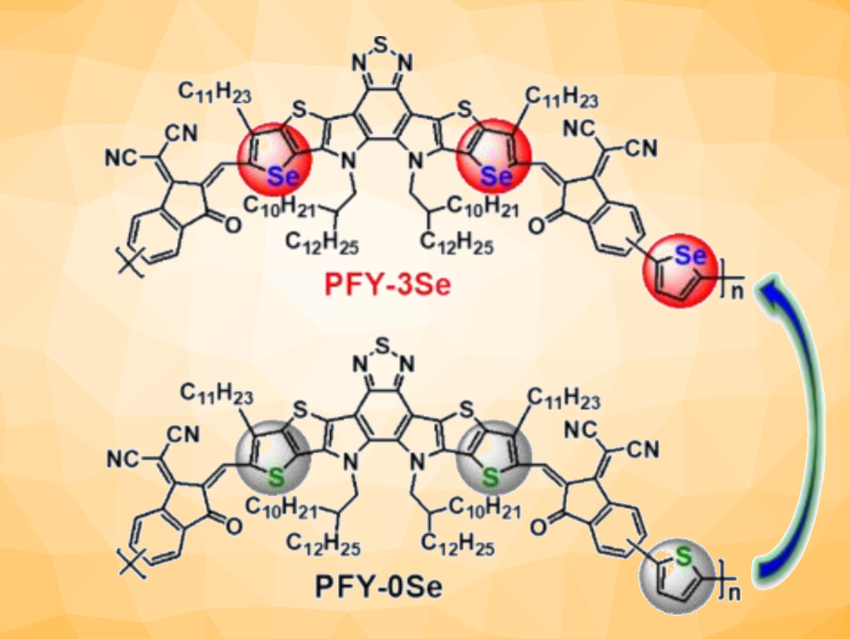All-polymer solar cells (all-PSCs) have made a lot of progress due to recent advances of polymerized small molecule acceptors (PSMAs). Power conversion efficiencies (PCEs) have reached values of over 14 %. However, practical applications of all-PSCs are still restricted by the lack of PSMAs with a broad absorption spectrum, low energy loss, and high batch-to-batch reproducibility.
Alex K.-Y. Jen, City University of Hong Kong, Kowloon, China, and colleagues have developed a multi-selenophene-containing PSMA (PFY-3Se, pictured at the top) with a selenophene-fused SMA building block and a selenophene π-spacer. The team synthesized the SMA monomer from a simpler precursor via the closing of the nitrogen-containing five-membered ring, introduction of the sidechains at the nitrogen atoms, the formation of aldehydes at both ends, and a reaction with a bromo-3-oxo-2,3-dihydro-1H-inden-1-ylidene)malononitrile. The resulting monomer was then polymerized together with 2,5-bis(trimethylstannyl)selenophene as a spacer.
Compared to its thiophene analog PFY-0Se (pictured at the bottom), PFY-3Se has red-shifted absorption, improved electron mobility, and increased intermolecular interactions. In all-PSCs, PFY-3Se achieves a high device efficiency of 15.1 %, outperforming the thiophene analog (13.0 %). PFY-3Se maintains good batch-to-batch reproducibility in the device performance. PFY-3Se-based all-PSCs show low dependence of photovoltaic performance on active layer thicknesses (110–250 nm) and device areas (0.045–1.0 cm2), indicating that PFY-3Se is a potential candidate for practical applications.
- Multi‐Selenophene‐Containing Narrow Bandgap Polymer Acceptors for All‐Polymer Solar Cells with over 15% Efficiency and High Reproducibility,
Qunping Fan, Huiting Fu, Qiang Wu, Ziang Wu, Francis Lin, Zonglong Zhu, Jie Min, Han Young Wu, Alex K.-Y. Jen,
Angew. Chem. Int. Ed. 2021.
https://doi.org/10.1002/anie.202101577



